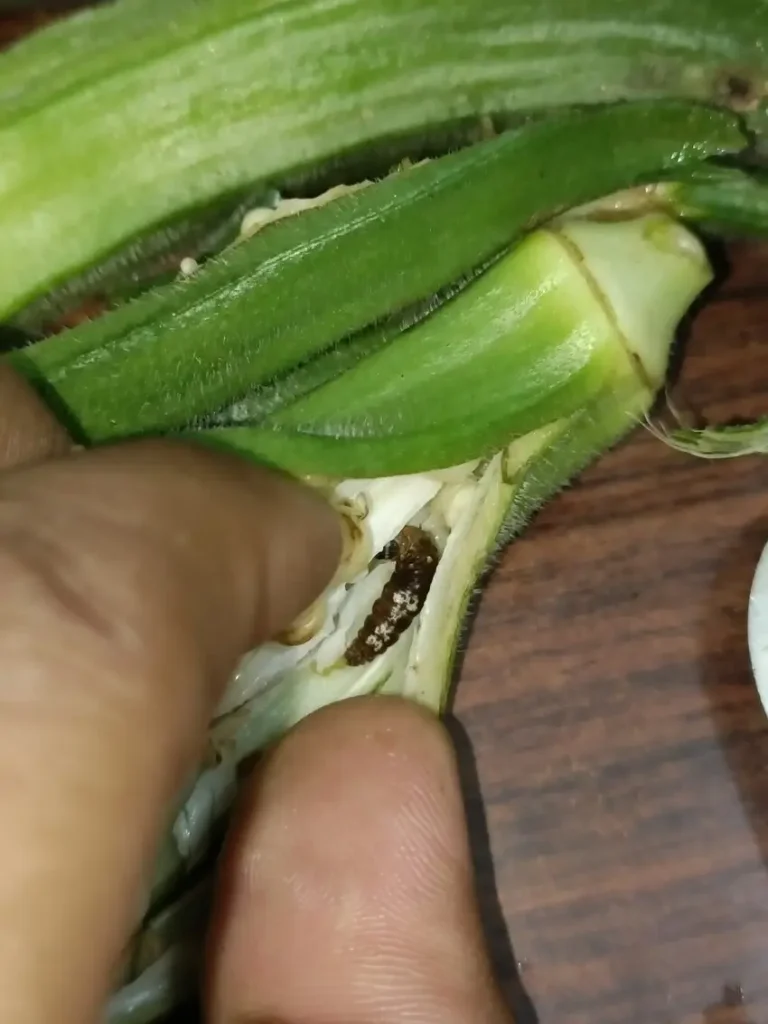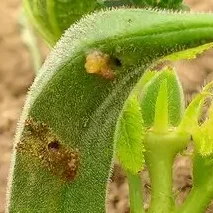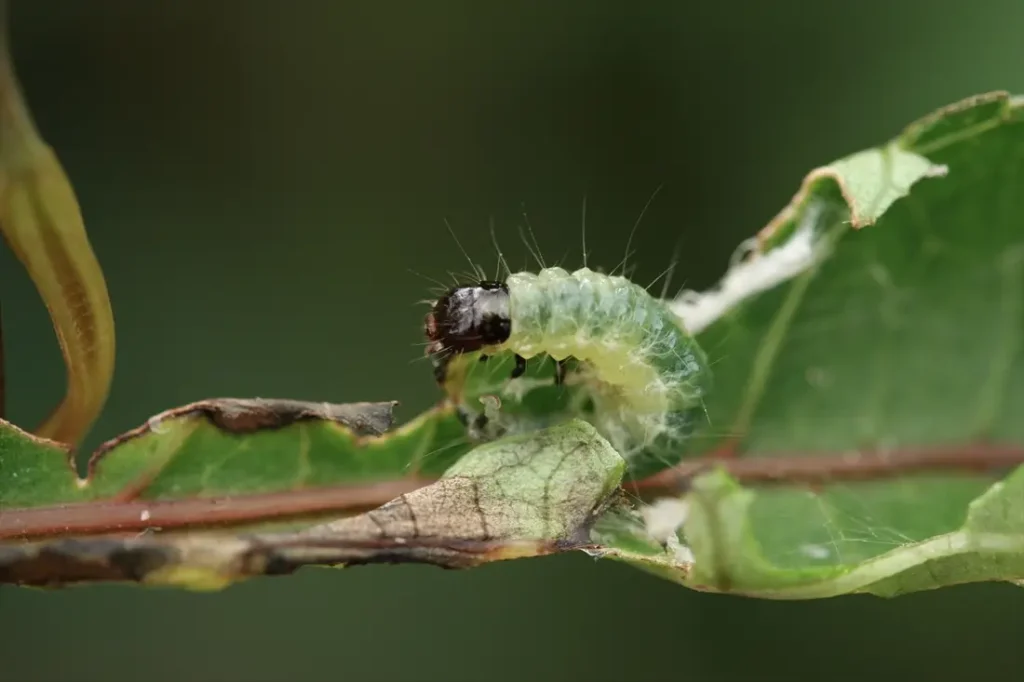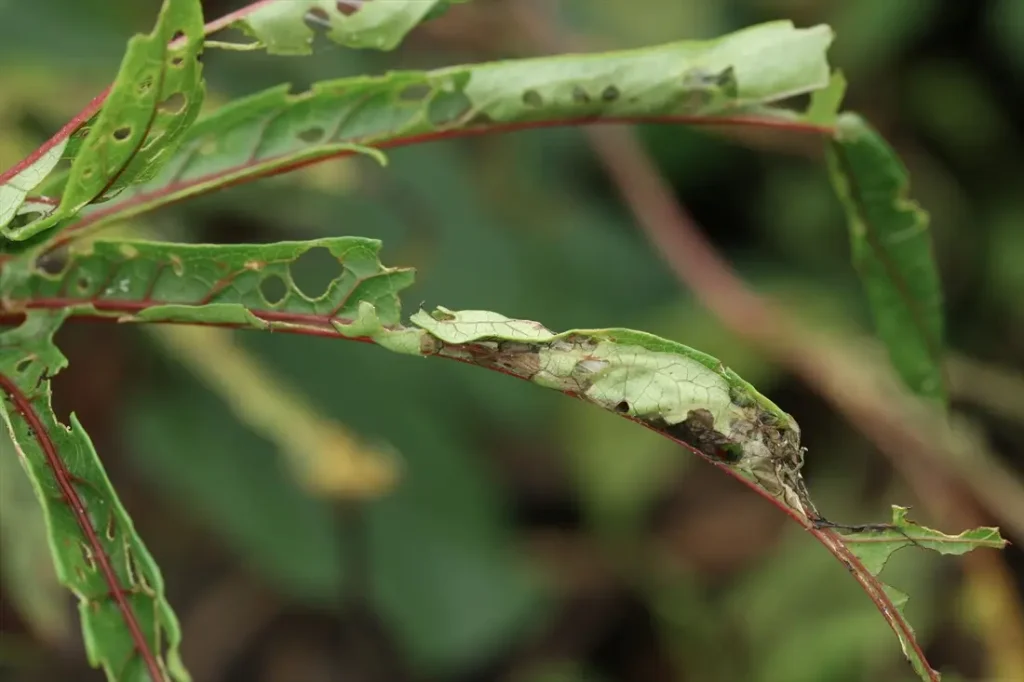Okra, also known as Bhendi, is a favourite vegetable in many households and an important crop for farmers. However, growing okra comes with its challenges, especially when it comes to pests. Some of the most common okra pests are shoot and fruit borers, jassids, whiteflies, fruit borers, aphids, etc. which may cause up to 69% yield loss. Therefore it becomes important to keep these pests away from the okra fields.
3 Major Pests of Okra
- Shoot and Fruit Borer
- Leaf Roller
- Aphids
Shoot and Fruit Borer (Earias vitella, Earias insulana)

The shoot and fruit borer is one of the most destructive pests of okra as they alone can cause about 45-57 per cent damage to fruits. Hence, knowing the damage symptoms and controlling them in their early infestation stage becomes important.
Borer Damage Symptoms on Okra
If you are observing withering and drooping of terminal shoots, these might be initial symptoms of fruit and shoot borer in okra. If not taken care of properly you can also see shedding of buds and flowers prematurely.
But is it really a borer? How to cross check?
Look for bore holes in the okra fruits, if you are seeing it, it is actually the sign indicating borer larva feeding inside.

Keeping borer in check is important as these can lead to deformed fruits making them unmarketable.
These fruit borers are nothing but larvae of moth species such as Earias vitella and Earias insulana, which bores into okra plants. These larvae emerge from eggs laid by the moths on the okra plants, which bore into the shoot and fruit of the okra.
Identification of the Pest
Earias vitella
Eggs: Eggs are sculptured and sky blue in colour
Larvae: Brownish with white streaks dorsally and pale yellow ventrally

Adults: Pale forewings with a distinctive wedge-shaped green band in the middle
Earias insulana
Larvae: Brown with a white median longitudinal streak on the dorsum.
Pupae: Brown and boat-shaped.

Adults: Uniformly silvery green forewings
Tips to Control Borers in Okra
Mechanical Control of the Pest
To control fruit borers, set up pheromone traps at 12 per hectare to monitor and reduce the borer population.
Regularly collect and destroy affected fruits to prevent the spread of the okra fruit and shoot borer.
Biological Control of Borers
Release egg parasite Trichogramma chilonis at 1.0 lakh per hectare and the green lacewing predator Chrysoperla carnea at 10,000 per hectare.
Chemical Control Methods
For chemical control, dust carbaryl 10% DP at 25 kg per hectare or spray Bacillus thuringiensis at 2 g/litre.
You can also apply chemicals containing Azadirachtin at 5.0 g/litre such as Criyagen Neem Oil or Emamectin benzoate 5% SG at 3.0 g/10 litres are also effective.

Leaf Rollers in Okra
Leaf rollers are one of the important pests on okra that can cause significant damage to okra plants making it essential to identify and manage this pest effectively.
What Does a Leafroller Attack Look Like?

Caterpillars roll the leaves and create their shelters, this is the important symptom and is easily identifiable. These caterpillars of leaf rollers scrape the chlorophyll and feed inside the rolled leaves. As these mainly feed on leaves, severe infestation can lead to significant leaf loss, impacting plant health.

How Do You Know If It is a Leaf Roller?
Larvae of leafrollers are bright green in colour with a dark head and prothoracic shield.

Adults are moths with yellow wings and brown wavy markings.
Know How to Manage Leaf Rollers in Okra?
Mechanical Control of Leafrollers in Okra
To manage leaf rollers, regularly collect and destroy rolled leaves to reduce the pest population.
Chemical Control of the Pest
To control the infestation on leafrollers in okra effectively, spray insecticides such as Carbaryl 50 WP at 2 g / litre or Phosalone 35 EC at 2 ml / litre.
Aphids in Okra
Aphids are common pests of okra and are dangerous pests as well as they can cause yield losses.
Symptoms of Aphid Attack in Okra

Aphids mainly attack tender shoots and are found in the underside of the leaves. The leaves infested by the pests are usually crinkled and curled. Managing this pest becomes important as severe infestation can lead to stunted plant growth. One of the important symptoms of this pest is excretion of honeydew which promotes the sooty mold on the leaves and you can see boost development on the leaves.

Aphids in Okra: Pest Identification
Nymphs of the aphids are yellowish or greenish-brown in colour and found on the undersides of leaves.
Adults are greenish-brown coloured, soft-bodied and small.
Manage Aphids in Okra
Mechanical Control of the Pest
Use yellow sticky traps in the okra fields to monitor and reduce aphid populations.
Chemical Control of Aphids
To manage aphids efficiently, spray with Acetamiprid 20 SP at 1.5 g / 10 litres, Malathion 50EC at 1.25 ml / litre or Imidacloprid 200 SL at 100 ml / ha.
Know how to control sucking pests in cotton from here
Dealing with pests of okra can be challenging, but with proper identification and management strategies, you can protect your okra plants from these common pests. Adopt the tips mentioned above and keep the pests under control. Remember to regularly monitor your plants, use biological and chemical controls as needed, and keep your garden clean to minimise pest infestations. Happy gardening!
Want to order these pesticides for your field? Looking for free crop advisory services? Download AgriApp today and improve your yield with better advice and products.